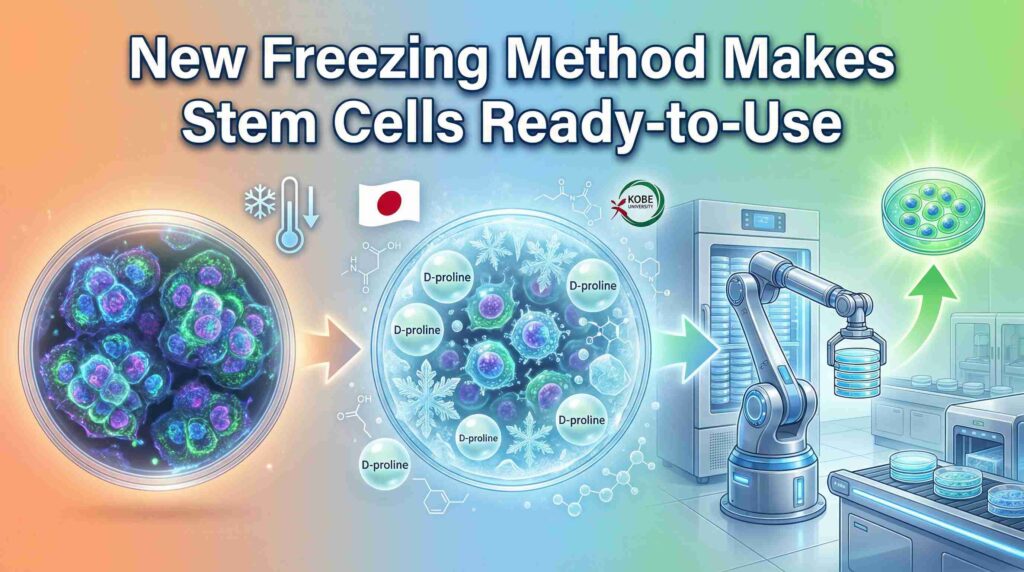Have you ever wondered if the natural healing powers of your body could be enhanced?
Stem cell injections, a cornerstone of modern regenerative medicine, offer just that—a way to potentially accelerate the body’s own repair mechanisms. But what exactly makes this innovative treatment so promising, and why are researchers and healthcare professionals excited about its possibilities?
This article delves into the transformative benefits of stem cell injections, providing a deeper understanding of this cutting-edge therapy.
What are Stem Cells?
Stem cells are the body’s raw materials, cells from which all other cells with specialized functions are generated. Under the right conditions in the body or a laboratory, stem cells divide to form more cells called daughter cells.
These daughter cells either become new stem cells (self-renewal) or specialized cells (differentiation) with a more specific function, such as blood cells, brain cells, heart muscle cells, or bone cells.
There are three main types of stem cells: embryonic stem cells, adult stem cells, and induced pluripotent stem cells, each with unique potential applications in medicine.
How Stem Cell Injections Work
Stem cell injections involve extracting stem cells from one of the body’s sources, such as bone marrow or fat, sometimes reprogramming them, and then injecting them into the damaged tissue.
This process aims to exploit the natural healing ability of stem cells to repair tissues, reduce inflammation, and enhance recovery.
Whether these cells are guided to become specific types of tissue cells, or they are used to release substances that aid other cells in their reparative tasks, the goal is to improve function and decrease disease symptoms.
Key Benefits of Stem Cell Injections
Stem cell injections offer numerous potential benefits, which include:
- Pain Management and Reduced Inflammation: They can significantly decrease pain and inflammation, often with long-lasting effects.
- Enhanced Healing and Recovery: These injections can accelerate the healing of injured tissues, reducing recovery time.
- Potential to Avoid Surgery: For some conditions, stem cell injections might offer an alternative to surgical intervention, reducing the risks and discomfort associated with surgeries.
- Low Risk of Rejection: Using the patient’s own cells reduces the risk of immune rejection.
- Wide Application: Stem cell therapies are being explored in the treatment of various conditions, including, but not limited to, arthritis, spinal cord injuries, tendonitis, and even cardiovascular diseases.
Clinical Evidence and Current Research
Research into stem cell injections is ongoing, with many studies showing positive outcomes in areas such as orthopedics and chronic pain management.
Clinical trials continue to explore the breadth and depth of stem cell efficacy, focusing on how these therapies can be safely and effectively integrated into current medical practices.
Risks and Side Effects
While the benefits of stem cell injections are significant, they come with risks such as potential infections, immune reactions, and the uncontrolled growth of cells.
Moreover, ethical and regulatory concerns continue to shape the landscape in which these treatments are developed and administered.
Patient Testimonials and Case Studies
Personal stories and case studies highlight the transformative effects of stem cell injections, offering insights into their potential to change lives.
Patients often report improved quality of life, reduction in pain, and increased mobility.
FAQs
What does a stem cell injection do? It uses the body’s own regenerative capabilities to repair damaged tissues and organs, promoting healing and functional improvement.
Who is a good candidate for stem cell therapy? Individuals with chronic pain, degenerative conditions, or injuries that have not responded well to standard treatments may consider stem cell therapy.
Are stem cell injections safe? Yes, when performed under regulated conditions and approved clinical trials, stem cell injections are generally safe but do come with potential risks that should be discussed with a healthcare provider.
Conclusion
Stem cell injections represent a fascinating frontier in medical science, offering new hope for patients with various conditions.
As research advances, these therapies might become more mainstream, changing the landscape of medical treatment and offering new pathways to healing and health.



